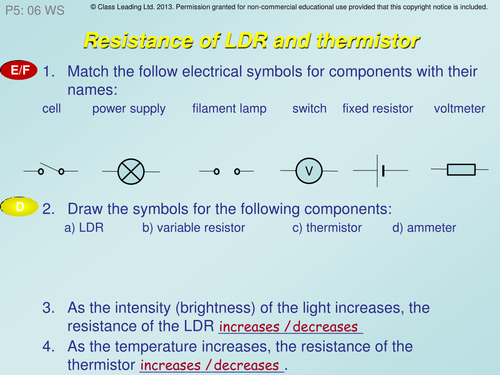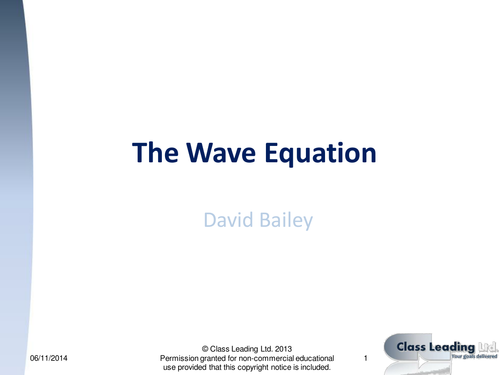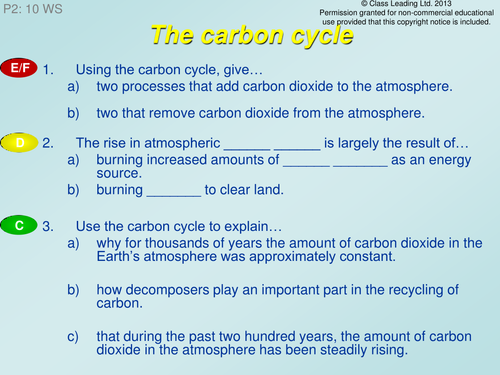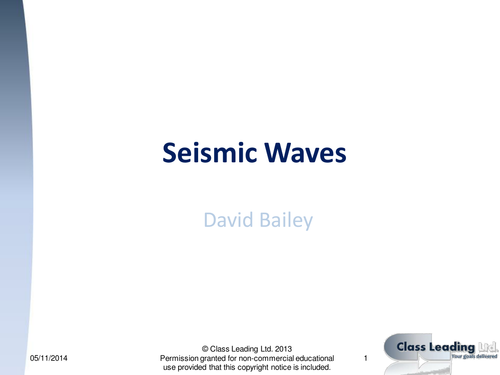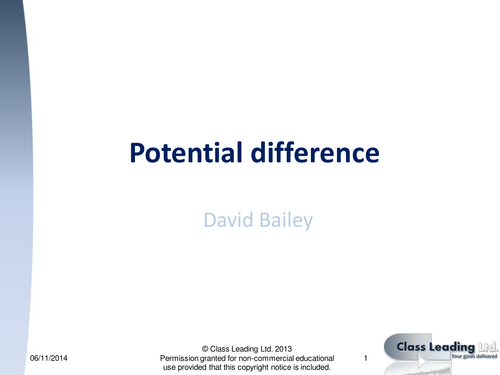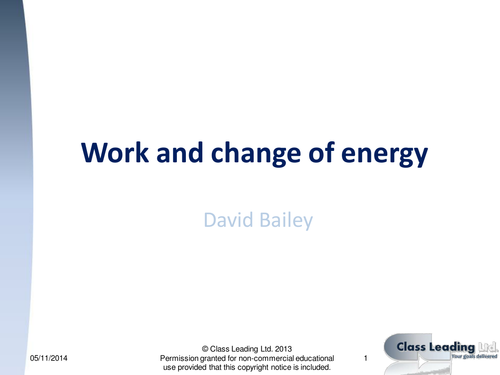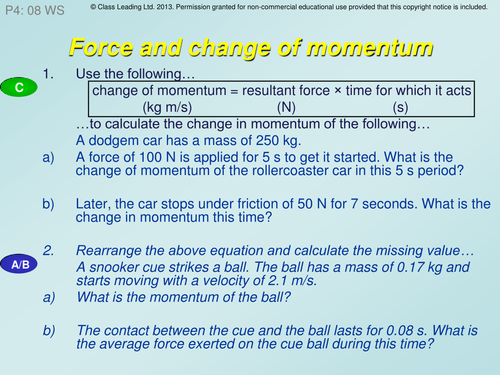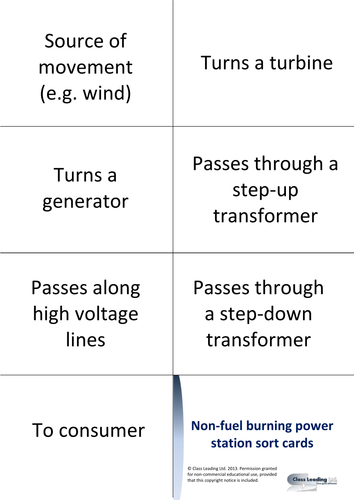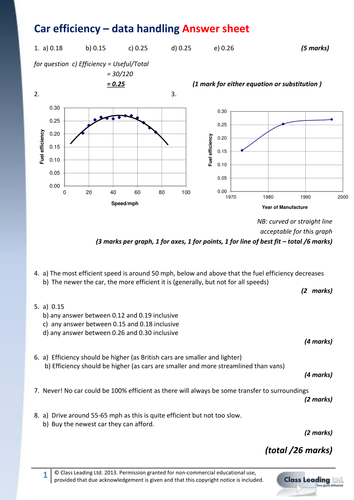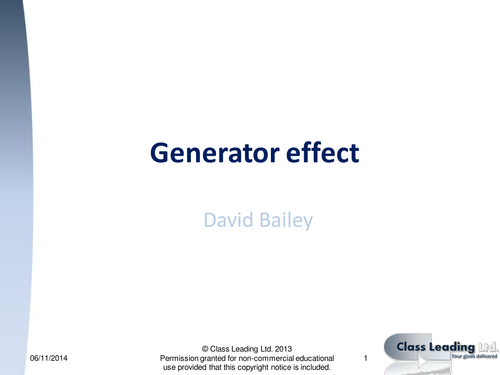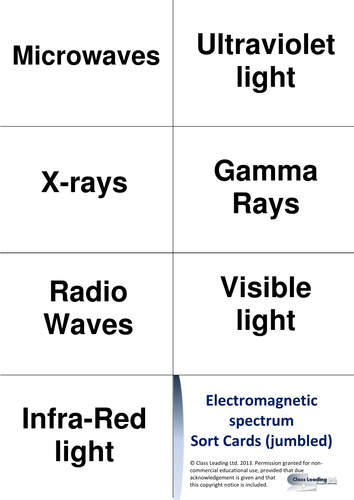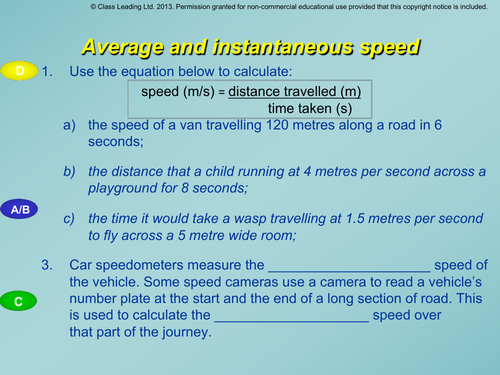314Uploads
260k+Views
194k+Downloads
Physics

Food chains and energy transfer - questions
This is a worksheet based activity that includes some higher order thinking to explore the ideas around energy transfer in simple food chains. Two versions are included, one with legacy GCSE grades, the other without. (please note that grade indications are only approximate). Why not try getting learners to choose a selection of questions to answer (e.g. do Q1-4 or Q3-8) An answer sheet is included.
This resource was originally designed for OCR 21st Century Science unit B3.
A premium editable version of this is available at: https://www.tes.com/teaching-resource/-11858631
Keywords: energy, transfer, food chain, efficiency

Resistance of LDR & thermistor - graded questions
This activity contains a powerpoint with graded questions & answers and matching pupil activity sheets, designed to be used at the end of a lesson and/or the start of the next lesson to review previous learning. The questions are based on the previous OCR 21st Century Science Specification unit P5, although could be used with other exam boards.
Clicking through the show reveals answers one a time. These reduce to A5 easily, the ideal size for most pupils. Please note grades are approximate.

The Wave Equation - graded questions
This activity contains a powerpoint with graded questions & answers and matching pupil activity sheets, designed to be used at the end of a lesson and/or the start of the next lesson to review previous learning. The questions are based on OCR 21st Century Science Specification, although could be used with other exam boards.
Clicking through the show reveals answers one a time. There are two slightly different activity sheets for differentiation - one has key words, the other without. These reduce to A5 easily, the ideal size for most pupils. Please note grades are approximate.

The carbon cycle - grade questions
This activity contains a powerpoint with graded questions & answers and matching pupil activity sheets, designed to be used at the end of a lesson and/or the start of the next lesson to review previous learning. The questions are based on the previous OCR 21st Century Science Specification unit P2, although could be used with other exam boards.
Clicking through the show reveals answers one a time. These reduce to A5 easily, the ideal size for most pupils. Please note grades are approximate.

Analogue vs. Digital activities
This activity comprises of an interactive spreadsheet model that allows you to change the value in the yellow coloured cell to represent a percentage of noise added to a signal. It allows you to see what happens to both analogue and digital signals with the same amount of noise side by side. There is a worksheet to summarise the difference between the two kinds of signal and also an activity for pupils where they plot out signal plus noise by hand - ideal for a flipped learning (prep) approach where pupils do this in advance of the lesson before discussion in the lesson.

Seismic Waves - graded questions
This activity contains a powerpoint with graded questions & answers and matching pupil activity sheets, designed to be used at the end of a lesson and/or the start of the next lesson to review previous learning. The questions are based on OCR 21st Century Science Specification, although could be used with other exam boards.
Clicking through the show reveals answers one a time. There are two slightly different activity sheets for differentiation - one has key words, the other without. These reduce to A5 easily, the ideal size for most pupils. Please note grades are approximate.

Potential difference - graded questions
This activity contains a powerpoint with graded questions & answers and matching pupil activity sheets, designed to be used at the end of a lesson and/or the start of the next lesson to review previous learning. The questions are based on the previous OCR 21st Century Science Specification unit P5, although could be used with other exam boards.
Clicking through the show reveals answers one a time. These reduce to A5 easily, the ideal size for most pupils. Please note grades are approximate.

Greenhouse Effect & Solar System - data handling
This activity follows on well from the Greenhouse effect starter. Based on interpreting data about planets in the solar system, it leads learners to the conclusion that Venus is hotter than it should be due to CO2. There are two levels of activity, the more demanding one explores the role of photons/light/radiation in heating planets. This activity was originally designed for 21st Century Science unit P2.
Please note that this is a non-editable resource. A premium editable version is also available at: https://www.tes.com/teaching-resource/resource-11858634
Key words: greenhouse effect, atmosphere, CO2, carbon dioxide, global warming

Transformers - graded questions
This activity contains a powerpoint with graded questions & answers and matching pupil activity sheets, designed to be used at the end of a lesson and/or the start of the next lesson to review previous learning. The questions are based on the previous OCR 21st Century Science Specification unit P5, although could be used with other exam boards.
Clicking through the show reveals answers one a time. These reduce to A5 easily, the ideal size for most pupils. Please note grades are approximate.

Work & change of energy - graded questions
This activity contains a powerpoint with graded questions & answers and matching pupil activity sheets, designed to be used at the end of a lesson and/or the start of the next lesson to review previous learning. The questions are based on the previous OCR 21st Century Science Specification unit P4, although could be used with other exam boards.
Clicking through the show reveals answers one a time. These reduce to A5 easily, the ideal size for most pupils. Please note grades are approximate.

Force & Change of momentum - graded questions
This activity contains a powerpoint with graded questions & answers and matching pupil activity sheets, designed to be used at the end of a lesson and/or the start of the next lesson to review previous learning. The questions are based on the previous OCR 21st Century Science Specification unit P4, although could be used with other exam boards.
Clicking through the show reveals answers one a time. These reduce to A5 easily, the ideal size for most pupils. Please note grades are approximate.

Electromagnetic (EM) Spectrum summary grid
This worksheet is useful for student to summarise information about the EM Spectrum, It can be used as an information gathering tool or to sum up key points about the spectrum. It could also be used for independent learning in school. It goes well with the activity EM Spectrum sort cards.
There are three slightly different sheets that increase in demand from (1) to (3).
This resource is part of a sequence with the following three other resources:
This resource
EM spectrum sort cards https://www.tes.com/teaching-resource/resource-6341302
IR remote control https://www.tes.com/teaching-resource/resource-12952897
UV Washing powder https://www.tes.com/teaching-resource/resource-12952892

Evidence for climate change - data handling
This is a short standalone activity, good for developing higher order thinking skills and providing an opportunity for cognitive conflict and discussion. Firstly either allow the students to work through the first two set of tasks sequentially. Alternatively, one half of class can be given first sheet,marked with a triangle, the other half being given the ones marked with a square to be worked on independently. After a few mins pair up with third sheet. Students respond well to even quite tricky questions.

Power station sort cards - sequencing
This resource is to help learners either learn or revise the sequence of events in generating electricity for consumers. The statements on the card are partial statements about what happens during this sequence. Learners could try sorting these as a prediction of the sequence. This allows for discussion & cognitive conflict. Students could justify their reasoning, complete the statements and/or sequence by indicating what is being referred to at each stage, compare similarities é differences é highlight differences in other power stations e.g. nuclear. Jumbled é non-jumbled versions included.

Car efficiency - Data handling
Keywords: Efficiency, calculation, graph, skill, explain, justify, MAT.
This activity is designed to stretch the most able learners with some questions and tasks related to calculating efficiency. There are some demanding questions involving handling data and using graphs to make predictions. This was designed as a home learning task to consolidate learning about efficiency.
It would also make a suitable starter for AS/A level.
An answer sheet is included with suggested marks for each question.

Generator effect - graded questions
This activity contains a powerpoint with graded questions & answers and matching pupil activity sheets, designed to be used at the end of a lesson and/or the start of the next lesson to review previous learning. The questions are based on the previous OCR 21st Century Science Specification unit P5, although could be used with other exam boards.
Clicking through the show reveals answers one a time. These reduce to A5 easily, the ideal size for most pupils. Please note grades are approximate.

Engaging 'hats' model of electric circuits
Keywords: circuit, model, current, charge, electron, hats
This is an engaging model for students to participate in modelling electric circuits. It is aimed at KS3, but has been used successfully with KS4 and KS5. It helps students build a coherent model to explain circuits, although alternative models help explain energy transfers and potential difference (voltage) better.
Please note that this was originally published a number of years ago as part of the North Yorkshire Success for All project.
A premium PowerPoint slideshow that provides a visual model of the motion of charges in the circuit is also available at https://www.tes.com/teaching-resource/resource-12613884

Ohm's Law - graded questions
This activity contains a powerpoint with graded questions & answers and matching pupil activity sheets, designed to be used at the end of a lesson and/or the start of the next lesson to review previous learning. The questions are based on the previous OCR 21st Century Science Specification unit P5, although could be used with other exam boards.
Clicking through the show reveals answers one a time. These reduce to A5 easily, the ideal size for most pupils. Please note grades are approximate.

Electromagnetic (EM) Spectrum sort cards
These sort cards can be used as a starter or starting point for the topic of the EM spectrum and again as a review/ plenary. They can also be used to help revise the sequence of the EM spectrum. This activity goes well with the EM grid activity.
This resource is part of a sequence with the following three other resources:
This resource
EM spectrum sort cards https://www.tes.com/teaching-resource/resource-6341302
IR remote control https://www.tes.com/teaching-resource/resource-12952897
UV Washing powder https://www.tes.com/teaching-resource/resource-12952892

Average & Instantaneous speed - graded questions
This activity contains a powerpoint with graded questions & answers and matching pupil activity sheets, designed to be used at the end of a lesson and/or the start of the next lesson to review previous learning. The questions are based on the previous OCR 21st Century Science Specification unit P4, although could be used with other exam boards.
Clicking through the show reveals answers one a time. These reduce to A5 easily, the ideal size for most pupils. Please note grades are approximate.


